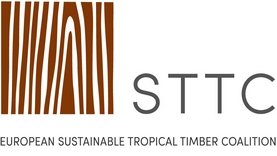Film focuses on sustainable management social benefits

Photo: World Bank
The third in a trio of films from ATIBT on sustainable tropical forest management focuses on its social impacts, with input from local people, civil society and logging company workers.
‘For the well-being of the population’ was shot in the Congo Basin, where the forest stretches across six countries, covers 2.5 million km2 and supports the livelihoods of 75 million people. It is also, of course, an area rich in resources, home to major industries including mining, forestry, oil and agro food production.
The challenge, states the film is how to balance the needs of the local population and economic interests ‘to reconcile conservation and the commercial exploitation of the natural environment’. Sustainable forest management is a key part of the solution, it says. ‘FSC and PEFC certified companies harvest wood, while limiting their impact on eco systems and seeking to preserve the culture and natural resources of forest inhabitants’.
One of the latter, Emmanuel Bokouaka, whose family lives in a Congo Brazzaville forest community said certification had changed his perception of foresters.
‘Before we had the preconceived idea that foresters were destroying the forest with the agreement of the state,” he said. “But now they’re working to improve the condition of our villages. They take trees that interest them and protect our food sources.”
Norbert Gami of the Congo Wildlife Conservation Society describes the forest as the ‘pantry’ of local communities and says any form of commercial exploitation that destroys their resources is not sustainable. Certified forest management, however, engages forest inhabitants in ‘social mapping’ with logging companies to ensure their interests are taken into account and the forest remains an area that provides them with food, medicine and other resources, and respects their social heritage.
The film acknowledges local populations can’t prevent granting of concessions to state owned forest in the Congo, but stresses their involvement in the process.
Jeveline Nguimbi of IFO Interholco’s social team describes the ‘sensitisation’ work that’s done with communities before harvesting commences in a concession. Together with locals, she undertakes geo-referenced mapping to delineate production zones and protected areas.
A key part of a sustainable forest management plan, says Eric Mvouyou, head of IFO Interholco’s social team, is establishment of a local development fund to share part of the profits from logging operations with communities. This underpins development of micro-projects by local people, with forest operations also supporting schools, health care and other community resources in their area.
Certified forest operations also, of course, generate jobs for local people. The film highlighted that in the past communities relied on hunting and slash and burn agriculture, one cause of deforestation. Mbané Joseph Florian, a heavy vehicle driver for Pallisco said his job enabled him to feed his family of 16 children and send them to a good school.
Norbert Gami concludes that the developing countries of the Congo need to balance conservation and development and in this respect sustainable forest management is a ‘model that works’. “It involves communities in decision making , which didn’t happen before, “ he said. “It’s not 100% perfect, but will improve with time.”
Besides IFO Interholco and Pallisco CIFM, ATIBT credits Rougier Gabon, Precious Woods and CIB OLAM for their support in making the film.
Click here to see all three films in the series.





